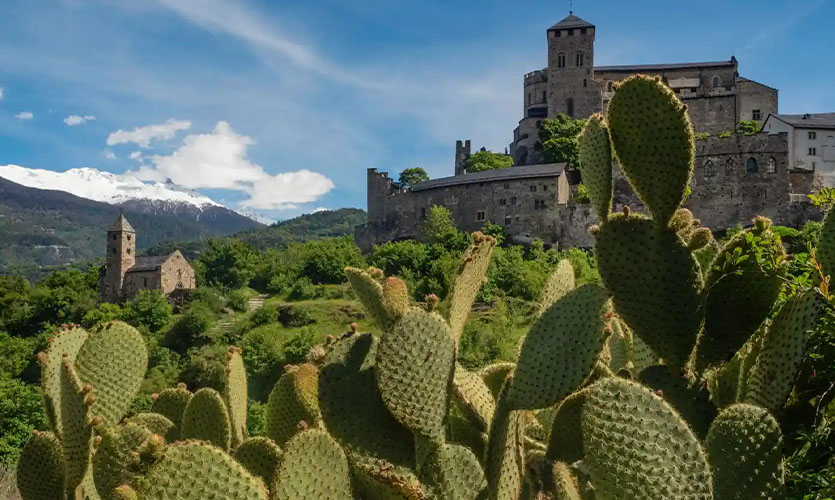The Swiss residents of Valais are facing the threat of invasive non-native species of cacti of the genus Opuntia on their mountain slopes, emerging due to global warming.
This cactus species is generally found in hot and dry regions, but has started encroaching on Valais natural reserves, threatening the biodiversity of the area, as per authorities.
Biologist Yann Triponez said that where the Opuntia species spread, they prevent other plants from growing.
The spread of Opuntia is not only limited to Valais. The species along with another similar cacti species have spread in Sion, the capital of Valais, and reportedly, have also been seen in the nearby Alpine areas of Ticino and Grisons in Switzerland and Aosta Valley, and Valtellina in Italy. Triponez said that Opuntia was imported to Valais from North America in the late 18th century.
On account of global warming, there is a decline in snow in Switzerland, including over the Alps. The number of snow days below 800 metres of height has halved since the 1970s, as per Meteo Swiss, the office of Meteorology and Climatology in Switzerland.
The average temperature in Switzerland has risen by 2.4°C from 1871-1900 levels.
As per authorities, the Alps has been facing reducing snow and warmer climate, due to which the Opuntia have spread. Peter Oliver Baumgartner, a retired geology professor, said that Opuntia can survive in -10°C to -15°C easily, but they prefer dry regions and not snow. He added that only four of the nine Opuntia species in Valais could be dangerous for local ecosystems, especially for acid or neutral soil areas that cover one-third of Valais’ south-facing slopes.
Baumgartner’s report is the first recent attempt to record the plants’ presence in Valais but it is yet to be published, so quantitative information about their spread is still not known.
According to Baumgartner, there is ample proof that they have proliferated in many areas where he visited. He added that the cacti could be restricted but doubted if they could be completely removed.
Any kind of forceful invasion by a foreign entity, usually leads to destruction of the local. This is not only true in the animal world, but also in the plant kingdom as shown by this cacti invasion. Encroaching on the local lands, they act as a hindrance to the growth of the naturally occurring vegetation, which is non-threatening and even useful to that area, thus in some cases leading to their destruction.
The cacti species was imported from North America a long time back and the negative consequences of that non-native introduction can be seen now. This is further enhanced and intensified by global warming.
The threat of an invasive plant species is not new. There have been multiple incidents over the course of history that have proved the dangerous consequences of introducing alien species at the expense of the native. Such is the case of the water hyacinth, a plant found in South America, which went on to become an invasive species in many places, including Lake Victoria in Uganda. There it posed a threat to the native plants and algae, hampering their growth, and as a chain effect, blocking the feeding and reproduction process of fish. This led to the fall of the fishing industry of Lake Victoria.
Read more: Recent Studies Find Links Between Polluted Air, Depression










